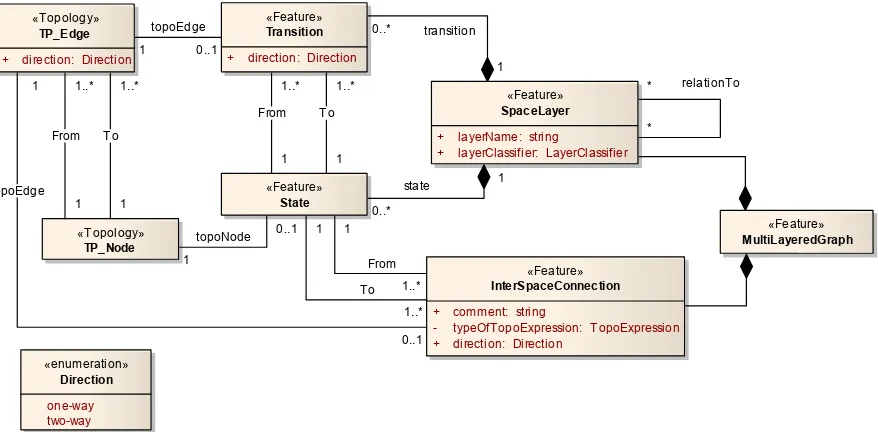All Fields marked with
*
are mandatory.
Change Request
#:
173
Assigned OGC
Document #:
11-151
Name:
*
JaeJun Yoo
Organization:
*
ETRI
Email:
*
[email protected]
Document
Name/Version:
*
Requirements and Space-Event Modeling for Indoor Navigation / 0.1.0
OGC Project
Document:
*
10-191r1
If this is a revision of a previous submission and you have a Change Request Number, then check here:
Enter the CR number here:
172
Enter the Revsion Number that you are revising here:
1
Title:
*
Direction Information for the Transition UML class in the data model
Source:
*
JaeJun Yoo (OGC member, 3DIM WG)
Work item code:
Category:
*
C (Functional modification of feature)
Reason for
change:
*
When we model indoor spaces for location-based services such as indoor-navigation, we need to consider direction of navigable path (that is, whether a path is one way or not).
For example, let¡¯s think about security check doors or
arrival doors at the airports. A customer can go forward through those
doors but cannot go back. Therefore, we need to describe the direction of a path or a transition when modeling indoor space.
However, it is understood that there is no way to describe such
directions of a path (or a transition) in the suggested data model. In the suggested data model, all transitions are bi-directional.
Therefore, we need some modifications to the suggested model to resolve this problem.
(this is the revised change request)
Summary of
change:
*
please refer the uploaded file at supporting document field below (some statements, typos, and mistakes are corrected.)
Consequences if
not approved:
Clauses affected:
*
chapter 8, 10
Additional
Documents
affected:
Supporting
Documentation:
Comments:
Status:
Assigned
Assigned To:
3DIM DWG
Disposition:
Referred
1. Reason for change
When we model indoor spaces for location-based services such as indoor-navigation, we need to consider direction of navigable path (that is, whether a path is one way or not).
For example, let’s think about security check gates or arrival doors at the airports. A customer can go forward through those doors but cannot go back. Therefore, we need to describe the direction of a path or a transition when modeling indoor space.
However, it is understood that there is no way to describe such directions of a path (or a transition) in the suggested data model. In the suggested data model, all transitions are bi-directional. Therefore, we need some modifications to the suggested model to resolve this problem.
2. Summary of change
When modeling real indoor spaces, we need to consider ‘direction’ of a path or a transition. However, all transitions of the currently suggested data model are bi-directional; therefore, it is proposed to include direction information in the data model.
That is, we need to add direction information to “Transition” and “InterSpaceConnection” UML classes in the semantics area of the suggested data model. Also, according to duality property of the model, “TP_Edge” UML class in the topology area of the suggested data model need to contain the direction information.
Fig. 1 below describes the proposed way to describe such direction information in the data model. 1) “Transition”, “InterSpaceConnection”, and “TP_Edge” classes have an attribute to describe the direction (one-way, two-way), and 2) a “State” or “TP_Node” is referred by a specified role name (from, to) instead of the role name “boundedBy.”
Fig. 1. Addition of direction information in the data model described in the discussion paper
(as part of “Fig. 28: Data Model of the Multilayered Space-Event Model” figure in the discussion paper)
Definitely, there can be another way to describe direction of a path or a transition, and it will be worth to be discussed.
«Feature»
Transition
+ direction: Direction
«Feature»
State
«Feature»
InterSpaceConnection
+ comment: string
- typeOfTopoExpression: TopoExpression + direction: Direction
«Feature»
SpaceLayer
+ layerName: string
+ layerClassifier: LayerClassifier
«Feature»
+ direction: Direction
